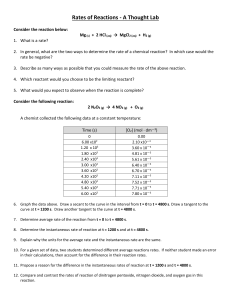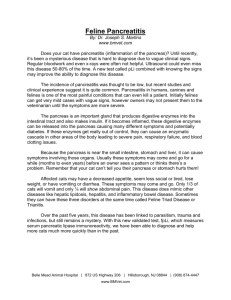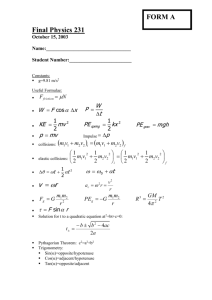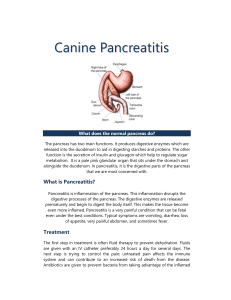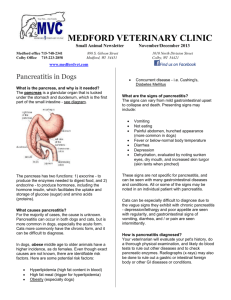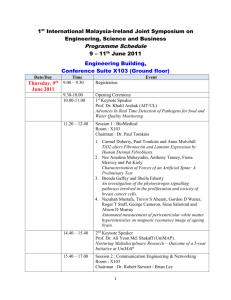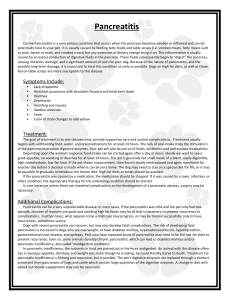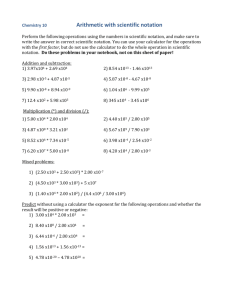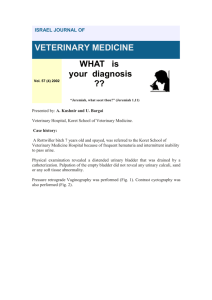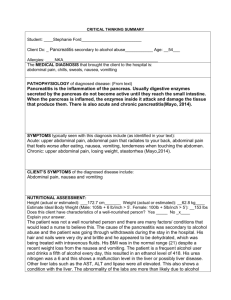WHAT IS YOUR DIAGNOSIS
advertisement
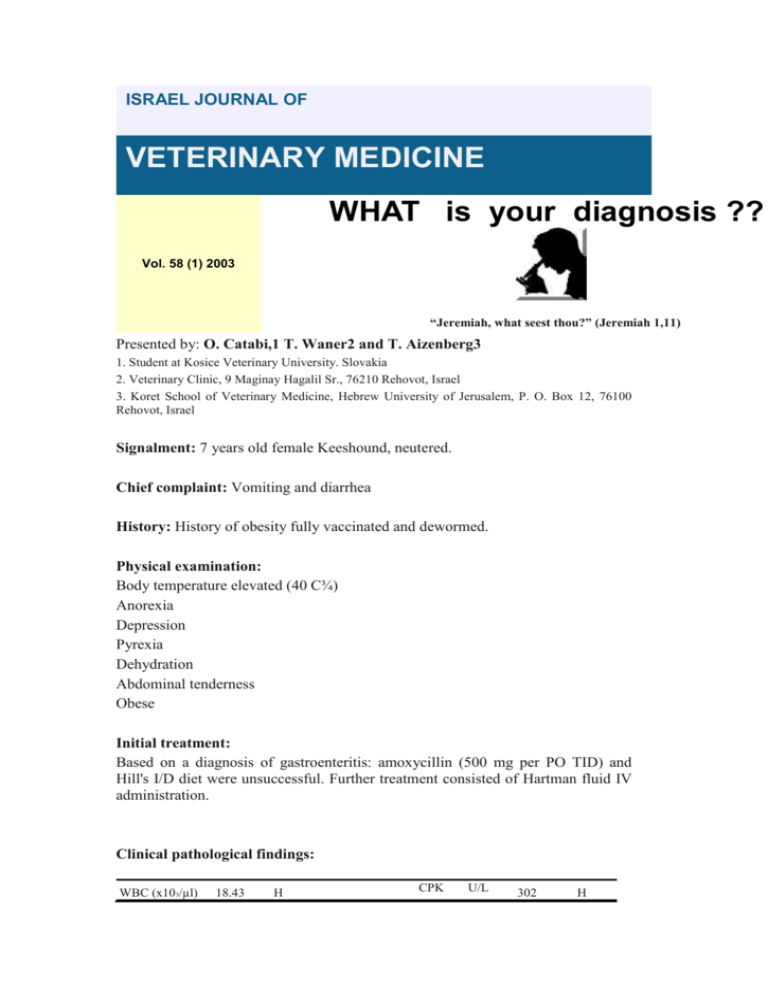
ISRAEL JOURNAL OF VETERINARY MEDICINE WHAT is your diagnosis ?? Vol. 58 (1) 2003 “Jeremiah, what seest thou?” (Jeremiah 1,11) Presented by: O. Catabi,1 T. Waner2 and T. Aizenberg3 1. Student at Kosice Veterinary University. Slovakia 2. Veterinary Clinic, 9 Maginay Hagalil Sr., 76210 Rehovot, Israel 3. Koret School of Veterinary Medicine, Hebrew University of Jerusalem, P. O. Box 12, 76100 Rehovot, Israel Signalment: 7 years old female Keeshound, neutered. Chief complaint: Vomiting and diarrhea History: History of obesity fully vaccinated and dewormed. Physical examination: Body temperature elevated (40 C¾) Anorexia Depression Pyrexia Dehydration Abdominal tenderness Obese Initial treatment: Based on a diagnosis of gastroenteritis: amoxycillin (500 mg per PO TID) and Hill's I/D diet were unsuccessful. Further treatment consisted of Hartman fluid IV administration. Clinical pathological findings: WBC (x103/µl) 18.43 H CPK U/L 302 H RBC (x106/µl) 6.68 GGT U/L 3.2 Hgb (gm/dl) 17.1 BUN mg/dl 13 Hct % 50.5 CREA mg/dl 0.6 PLT (x106/µl) 113 L GLU mg/dl 86 NEU (x103/µl) 15.95 H Ca mg/dl 12.9 H mg/dl 356 H H LYM (x103/µl) 1.54 CHOL MON (x103/µl) 0.67 TRIG mg/dl 359 H 0.15 T.BIL mg/dl 1.2 H 0.08 PROT mg/dl 6.7 Globulins gm/dl 3.1 EOS (x103/µl) BASO (x103/µl) ALP U/L 699 H ALB gm/dl 3.6 H ALT U/L 80 H Cl mg/dl 123 H H K mg/dl 4.6 H Na mg/dl 145 AMYL U/L AST U/L 1715 109 H=above normal range; L= below normal range. The serum sample was lipemic and as a result slightly hemolytic. Ancillary diagnostic tests: Abdominal ultrasound Ultrasound showed an enlarged hypoechoic mass in the area of the pancreas compatible with edematous pancreatitis. What is your Diagnosis? Diagnosis: Pancreatitis Comments: 1. The history and clinical signs associated with pancreatitis are nonspecific and common to numerous gastrointestinal and metabolic disorders. 2. Leukocytosis with neutrophilia is a typical finding of pancreatitis. 3. Liver enzymes were elevated reflecting secondary hepatocellular injury as a result of either liver ischemia or exposure of the liver to high concentrations of toxic products delivered from the pancreas in the portal blood. 4. Hypercholesterolemia and hypertriglceridemia may have hindered the accurate determination of other serum and biochemical values. 5. The hypercalcemia was probably an erroneous result due to the lipemia and hemolysis. Treatment: It was decided to withhold food and maintain the dog's fluid and electrolyte balance while the pancreas was "rested". Hartman’s fluid IV administration. Treatment with analgesic (dipyrone, 250 mg IV BID) Antibiotic therapy with Baytril (enrofloxacin) (2.5 mg/kg SC BID). The use of plasma infusions was considered but due to the improvement in condition was not used. In cases of severe pancreatitis there may be marked consumption of plasma protease inhibitors as activated pancreatic proteases are cleared from the circulation. Acute disseminated intravascular coagulation, shock and death rapidly follow saturation of available alpha-macroglobulins. After two days the dog’s condition improved and it showed signs of hunger. At this point it was decided to feed the dog a low fat formula feed with high fiber content. (Hill's W/D). Small amounts of food were fed frequently. Recovery was unremarkable. LINKS TO OTHER ARTICLES IN THIS ISSUE 1.
